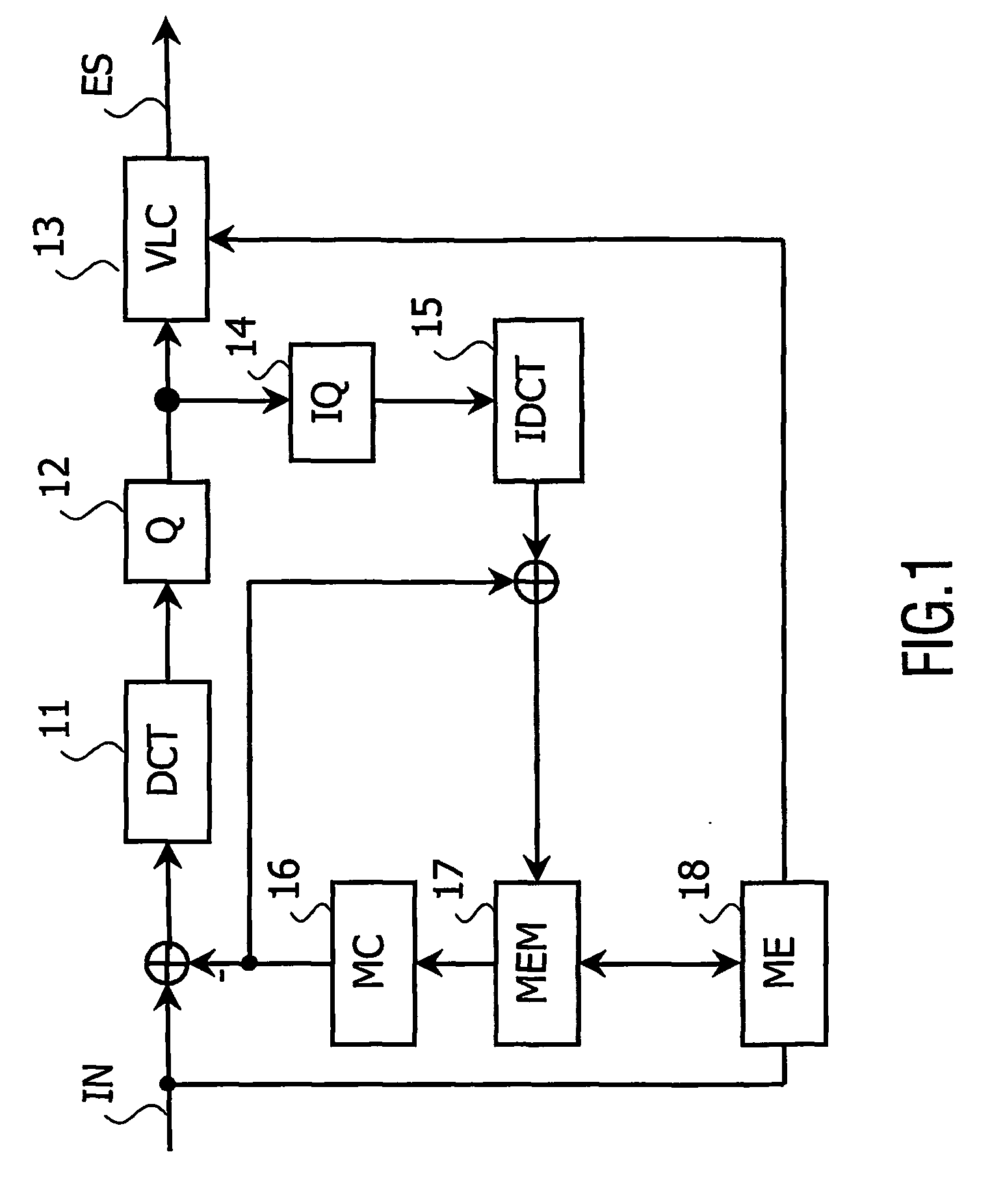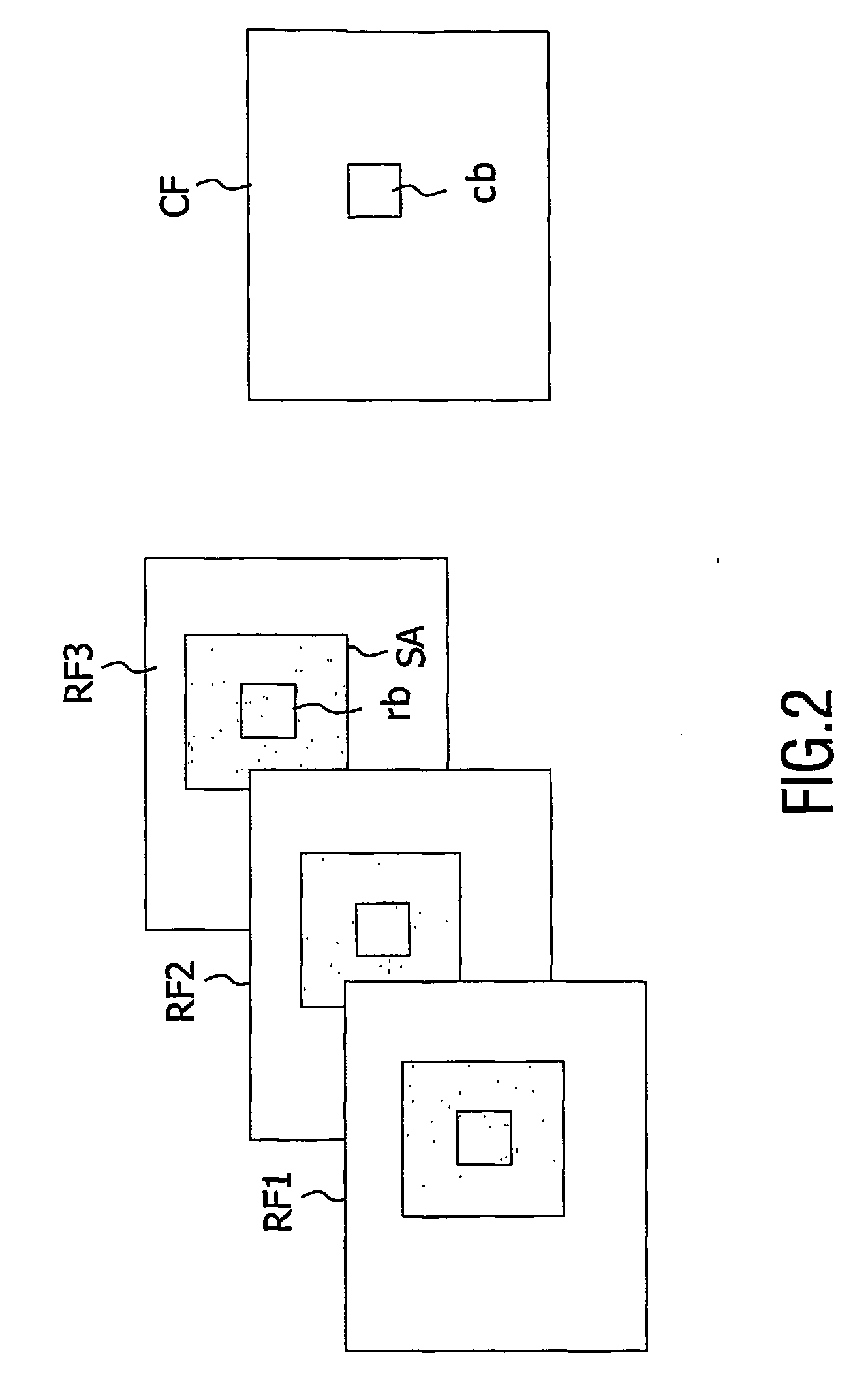Power optimized collocated motion estimation method
a motion estimation and power optimization technology, applied in the field of power optimization of collocated motion estimation methods, can solve the problems of inoptimized motion estimation methods, large power consumption, and most memory transfers, and achieve the effects of reducing memory transfer, reducing energy dissipation of a corresponding video encoding circuit, and increasing the reliability of said circui
- Summary
- Abstract
- Description
- Claims
- Application Information
AI Technical Summary
Benefits of technology
Problems solved by technology
Method used
Image
Examples
first embodiment
[0053]FIG. 4 illustrates said motion estimation method called collocated prediction. In such an embodiment, a value of a pixel p′ of the second reference portion pred is derived from a value of the pixel corresponding to a translation of the pixel of the second reference portion according to the opposite of the motion vector candidate MV. In other words, the missing pixel p′ is predicted on the basis of the pixel rb(x,y) collocated to the current pixel cb(x,y) as follows:
pred(rb,cb(x,y))=rb(x,y)−cb(x,y).
[0054] It is to be noted in FIGS. 4 to 6 that the arrow diff1 represents the computation of the first difference between pixels of the first reference portion rbp1 and corresponding pixels of the first current portion cbp1 and that the arrow diff2 represents the computing of the second difference.
second embodiment
[0055]FIG. 5 illustrates the motion estimation method called edge prediction. In such an embodiment, a value of a pixel of the second reference portion is predicted on the basis of a first interpolation of a pixel value of the reference block. Said prediction is defined as follows:
pred(rb, cb(x,y))=rb(proj(x),proj(y))−cb(x,y),
[0056] where the proj( ) function is adapted to determine the symmetric p″ of the pixel p′ of the second reference portion pred with reference to a horizontal and / or vertical edge of the reference block and to take the value of said symmetric pixel p″ as the reference value rb(x″,y″), as shown in FIG. 5.
third embodiment
[0057]FIG. 6 illustrates said motion estimation method. It is called spatial interpolation prediction. In this embodiment, a value of a pixel of the second reference portion pred is derived from an interpolation of values of several pixels of the first reference portion. For example, the value of the pixel p′ of the second reference portion is interpolated from the pixels belonging to the reference block rb that are on the same line or column as the pixel p′.
[0058] According to another embodiment of the invention, a single prediction value pred_value is derived from the reference block rb. The corresponding residual error block value is computed as follows:
r(x,y)=cb(x,y)−pred_value
[0059] pred_value is set to the mean of the reference block rb values or the median of said values.
[0060] Still according to another embodiment of the invention, strictly spatial prediction is performed. In that case, the reference block is not used. The prediction value pred_value is an average or a me...
PUM
 Login to View More
Login to View More Abstract
Description
Claims
Application Information
 Login to View More
Login to View More - R&D
- Intellectual Property
- Life Sciences
- Materials
- Tech Scout
- Unparalleled Data Quality
- Higher Quality Content
- 60% Fewer Hallucinations
Browse by: Latest US Patents, China's latest patents, Technical Efficacy Thesaurus, Application Domain, Technology Topic, Popular Technical Reports.
© 2025 PatSnap. All rights reserved.Legal|Privacy policy|Modern Slavery Act Transparency Statement|Sitemap|About US| Contact US: help@patsnap.com



